Introduction:
In the ever-evolving world of construction, concrete remains a fundamental element, continuously reshaped by groundbreaking innovations and trends. “Top Trends in Concrete Work: Innovations and Techniques for Modern Construction” is your window into the dynamic advancements transforming this age-old material into a cornerstone of modern architectural marvels. From eco-friendly green concrete to the marvels of 3D printing technology, this blog explores the cutting-edge developments that are redefining the capabilities of concrete in construction. We dive into the aesthetic, technological, and environmental strides being made, showcasing how concrete is not just about strength and durability but also about innovation, sustainability, and artistry. Join us as we unravel the latest trends that are setting new standards and possibilities in the construction industry, marking a new era in the use of concrete.
Brief overview of the evolution of concrete work in construction.
The history of concrete in construction is a testament to human ingenuity, tracing back thousands of years to ancient civilizations like the Romans, who pioneered the use of concrete in structures that still partially stand today. Initially, concrete was a rudimentary mix of lime, sand, and water, evolving over centuries as various cultures contributed to its development. The industrial revolution marked a significant turning point with the introduction of Portland cement, which substantially improved the strength and durability of concrete. In the 20th century, advancements in chemical additives and reinforcement techniques further enhanced its properties. Modern concrete has become more sophisticated, incorporating high-tech materials and methods like fiber reinforcement, self-healing abilities, and eco-friendly components. Today, it’s not just a foundation material but also a versatile medium for architectural expression. This evolution reflects the material’s adaptability and enduring significance in construction, making it as relevant today as it was in ancient times, yet constantly evolving with the times.
Purpose of the blog: Highlighting current trends and innovations in concrete construction.
The purpose of this blog, “Top Trends in Concrete Work: Innovations and Techniques for Modern Construction,” is to shine a light on the current and most groundbreaking trends reshaping the world of concrete construction. As we stand on the cusp of a new era in building and design, it’s crucial to stay informed about the innovative materials, techniques, and technologies driving this transformation. From environmentally sustainable options to aesthetically appealing designs and technologically advanced solutions, this blog aims to highlight the advancements that are not only redefining the capabilities of concrete but also how these developments are contributing to smarter, more efficient, and more sustainable construction practices. Whether you’re a professional in the field, a student of architecture, or simply a curious observer of construction trends, this blog will provide you with a comprehensive understanding of how modern concrete is being used to create the buildings and infrastructures of the future.
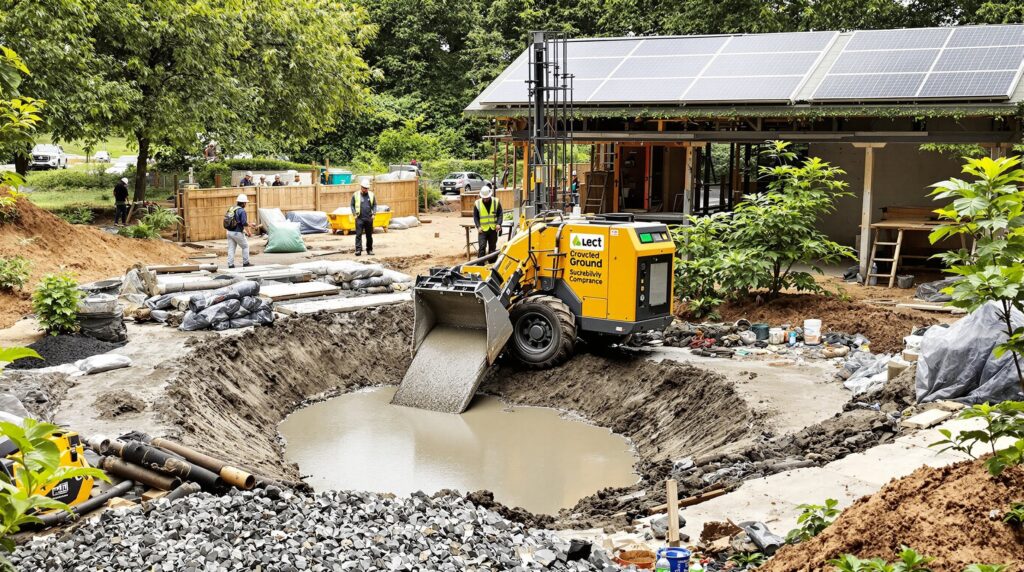
Eco-Friendly Concrete Solutions
As the construction industry strides towards a more sustainable future, eco-friendly concrete solutions are gaining significant traction, revolutionizing how we think about this ubiquitous building material. In the section titled “Eco-Friendly Concrete Solutions,” we delve into the innovative strides being made in developing green concrete options. This part of the blog focuses on the emergence of environmentally responsible materials and practices in concrete production, highlighting how they not only minimize ecological impact but also offer enhanced performance and efficiency. From the use of recycled materials to the reduction of carbon emissions in manufacturing processes, we explore the various ways the concrete industry is contributing to a greener planet. This section will provide you with an insightful look into how eco-friendly concrete is not just a trend but a necessary evolution, reflecting the construction industry’s commitment to sustainability and environmental stewardship.
Discussion on green concrete and its environmental benefits.
Green concrete, a revolutionary development in sustainable construction, represents a significant stride toward environmental stewardship in the concrete industry. This eco-friendly variant of traditional concrete is made by incorporating recycled materials like fly ash, slag, or recycled aggregate, thereby reducing the reliance on virgin raw materials and the overall carbon footprint. One of the most notable environmental benefits of green concrete is its lower carbon dioxide emissions during production, as it requires less energy-intensive cement. Additionally, the use of industrial by-products as substitutes in green concrete not only helps in waste reduction but also in minimizing landfill space. This sustainable approach extends the life cycle of materials that would otherwise be considered waste, embodying the principles of circular economy. Furthermore, certain types of green concrete are designed to be more permeable, thus aiding in better water management and reducing runoff in urban areas. With these environmental benefits, green concrete isn’t just a nod to eco-conscious construction practices; it’s a tangible solution addressing the urgent need for sustainability in the building industry.
Innovations in sustainable concrete mixes and recyclable materials.
The realm of sustainable concrete mixes is witnessing remarkable innovations, driven by a growing commitment to environmental responsibility in the construction industry. These advancements are centered around developing concrete mixes that not only perform on par with traditional concrete but also significantly reduce environmental impact. One such innovation is the incorporation of supplementary cementitious materials like fly ash, rice husk ash, or ground granulated blast-furnace slag, which not only recycle industrial by-products but also enhance the strength and durability of the concrete. Additionally, the use of recycled aggregates, sourced from demolished concrete structures, is gaining momentum. This not only conserves natural resources but also reduces waste in landfills. Cutting-edge research is also exploring the potential of new materials like bio-concrete, which uses natural processes such as bacterial calcite precipitation to improve concrete’s ecological footprint. These sustainable concrete mixes are a testament to the industry’s evolving approach, focusing on recyclable materials and innovative techniques to pave the way for a greener and more sustainable future in construction.
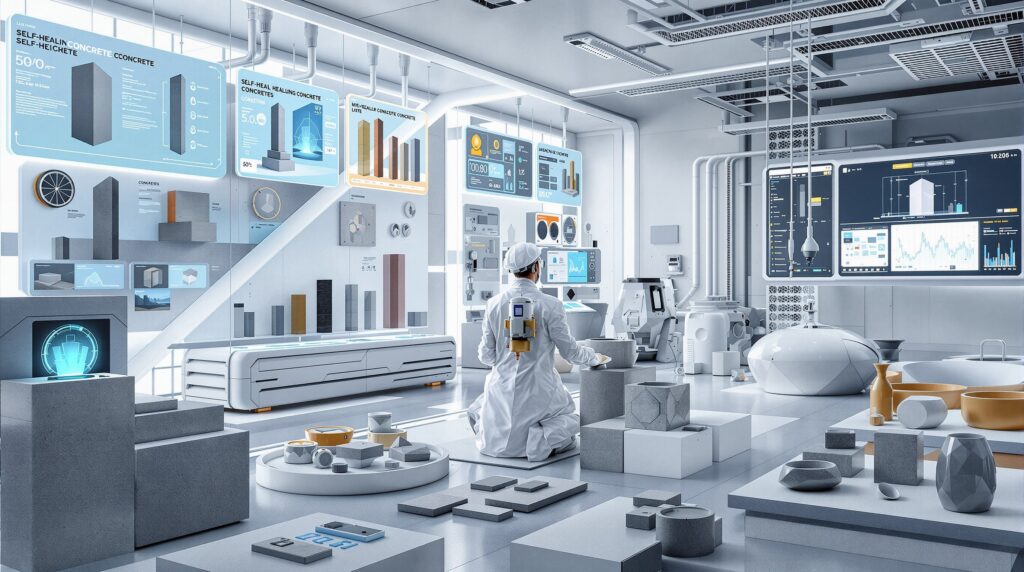
Advances in Concrete Technology
As we venture further into the 21st century, advances in concrete technology are propelling the construction industry into a new era of efficiency and innovation. In the section titled “Advances in Concrete Technology,” we explore the cutting-edge developments that are reshaping how concrete is viewed, used, and valued in modern construction. From self-healing concrete that promises enhanced durability to advanced methods in concrete mixing and curing, this segment of the blog will delve into the technological breakthroughs transforming this age-old building material. These advancements not only aim to improve the functional aspects of concrete, such as strength and longevity, but also address broader challenges like environmental impact and resource efficiency. This section is designed to provide insights into how contemporary technology is enabling concrete to meet the evolving demands of modern architecture and engineering, setting new benchmarks in the construction landscape.
Exploration of self-healing concrete and its applications.
The advent of self-healing concrete represents a groundbreaking advancement in the realm of construction materials. This innovative form of concrete is engineered to automatically repair its own cracks and fissures, significantly enhancing its durability and lifespan. The self-healing mechanism typically involves embedding the concrete with certain agents, such as bacteria that produce limestone or encapsulated polymers that are released upon crack formation. When these cracks occur, the embedded agents are activated, filling in and healing the damaged areas, effectively preventing water ingress and further deterioration. The applications of self-healing concrete are vast and transformative, particularly in structures where maintenance is challenging or safety is paramount, like underground pipelines, high-rise buildings, and bridges. By reducing the need for repairs and extending the structural integrity of concrete components, self-healing concrete not only offers a more sustainable solution by prolonging the life of concrete structures but also promises to significantly lower maintenance costs and enhance safety in the long run. This technology is a testament to the innovative strides being made in material science, pushing the boundaries of what’s possible in modern construction.
The role of technology in concrete mixing and curing processes.
Technology has ushered in a transformative era in the concrete industry by revolutionizing the concrete mixing and curing processes. Advanced machinery and digital control systems have streamlined and optimized the production of concrete mixes, ensuring consistent quality and performance. Automated batching plants, equipped with precise sensors and computer algorithms, precisely measure and mix raw materials, resulting in concrete with superior uniformity and strength. Additionally, the integration of Internet of Things (IoT) technology has brought real-time monitoring and data analysis to curing processes. Smart curing systems employ sensors and automated controls to manage temperature, humidity, and curing time with unprecedented precision. This not only accelerates the curing process but also enhances the durability and long-term performance of concrete structures. Technology-driven innovations in concrete mixing and curing not only improve the efficiency of construction projects but also contribute to the overall sustainability and resilience of concrete structures, ensuring they meet the rigorous demands of modern construction practices.
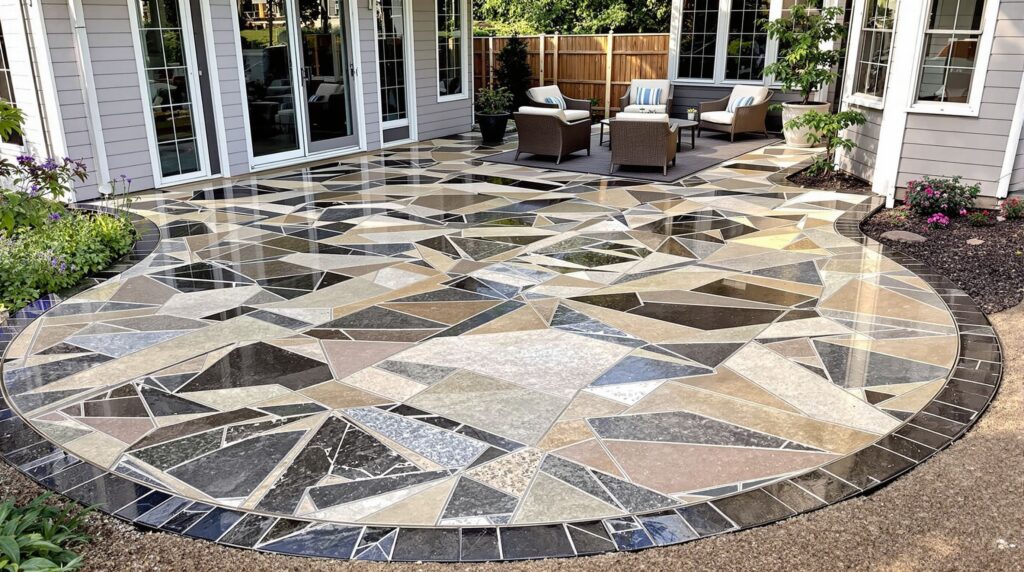
Aesthetic Innovations in Concrete
Concrete, once considered a utilitarian building material, is undergoing a stunning transformation in the world of aesthetics. In the section titled “Aesthetic Innovations in Concrete,” we embark on a journey through the creative and visually captivating side of concrete. Modern architectural and design trends have redefined the possibilities of this versatile material, turning it into a canvas for artistic expression. From stamped concrete that mimics the look of luxurious materials to vibrant coloring techniques and polished finishes, this segment of the blog explores the remarkable ways in which concrete is being used to elevate the aesthetics of structures. Beyond its structural strength, concrete is now celebrated for its ability to create visually stunning surfaces and sculptural forms. Whether you’re an architect seeking new design inspirations or a homeowner looking to infuse artistic flair into your living spaces, this section unveils the exciting world of aesthetic innovations in concrete that are reshaping the landscape of modern construction and design.
Trends in decorative concrete: Stamping, coloring, and polished finishes.
Decorative concrete has become the vanguard of contemporary design and construction, offering an array of techniques that elevate concrete to an art form. Stamping, coloring, and polished finishes are at the forefront of these trends, allowing concrete surfaces to imitate the look and texture of premium materials like stone, brick, or wood. Stamping involves pressing intricate patterns or textures into freshly poured concrete, creating the appearance of natural materials while retaining concrete’s durability. Coloring techniques, such as integral pigments or acid stains, infuse concrete with a spectrum of hues, enabling endless design possibilities. Polished finishes, achieved through grinding and buffing, produce glossy surfaces that are not only visually striking but also exceptionally smooth. These trends are reshaping how we perceive concrete, making it a versatile and customizable medium for architects, designers, and homeowners seeking to merge aesthetic appeal with structural strength. Decorative concrete is a testament to the harmony between form and function, turning ordinary spaces into artistic expressions of design excellence.
Use of concrete in architectural designs for modern aesthetics.
In the world of modern architecture, concrete has emerged as a transformative medium for realizing ambitious and awe-inspiring designs. Architects and designers are harnessing the versatility of concrete to craft buildings and structures that defy convention and celebrate contemporary aesthetics. The raw, minimalist appeal of exposed concrete, often referred to as “brutalism,” has become an architectural statement in itself, emphasizing the material’s natural textures and strength. Beyond its industrial charm, concrete is also being used to create curvaceous, sculptural forms that challenge traditional notions of shape and space. Its adaptability to various finishes, from sleek and polished to textured and weathered, offers architects a broad palette for creative expression. From iconic museums to avant-garde residences, the integration of concrete into architectural designs is emblematic of a dynamic and evolving architectural landscape that embraces the aesthetic and structural possibilities of this timeless material.
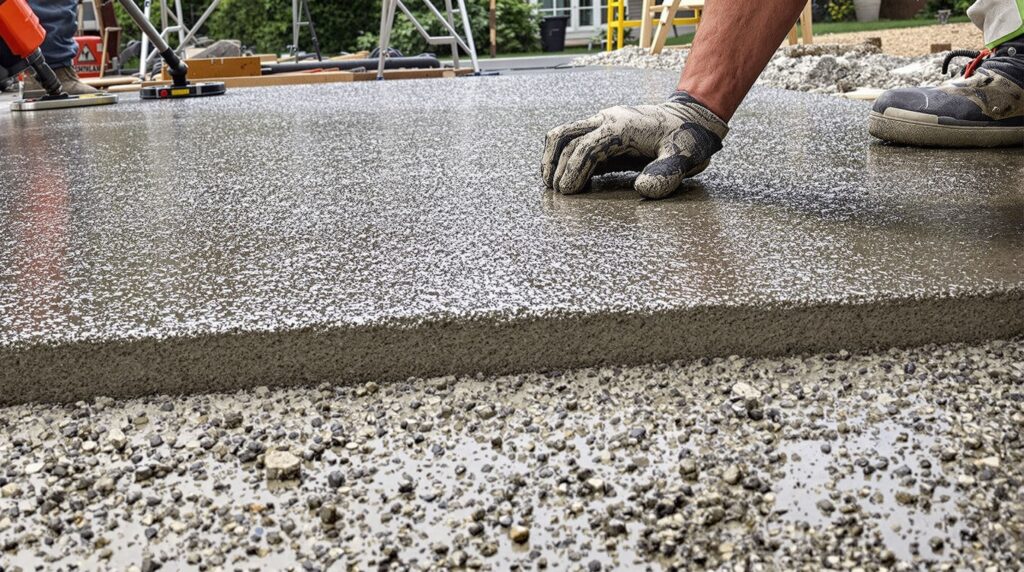
Durability Enhancements
In the world of construction, durability is the cornerstone of a successful project. In the section titled “Durability Enhancements,” we delve into the innovative techniques and materials that are redefining how concrete structures withstand the test of time and environmental challenges. This segment of the blog explores the cutting-edge developments aimed at bolstering the longevity and resilience of concrete. From high-strength concrete mixes designed to endure the harshest conditions to weather-resistant coatings that shield against the elements, this section uncovers the strategies employed to enhance the durability of concrete structures. Whether you’re a builder, architect, or simply curious about the science behind sturdy and long-lasting construction, this exploration of durability enhancements sheds light on the evolving techniques that are ensuring concrete remains the bedrock of resilient and enduring structures in the modern world.
Innovations in high-strength and weather-resistant concrete.
Innovations in high-strength and weather-resistant concrete have revolutionized the construction industry, offering solutions that go beyond the traditional boundaries of durability. High-strength concrete, engineered with advanced admixtures and carefully controlled mixes, can withstand immense pressure and stresses, making it ideal for high-rise buildings, bridges, and infrastructure projects. Additionally, weather-resistant concrete incorporates additives and coatings that provide a robust shield against harsh environmental conditions. These materials are designed to resist corrosion, freeze-thaw cycles, and chemical exposure, ensuring the longevity of concrete structures even in the most challenging climates. The innovations in these concrete formulations have not only expanded the horizons of architectural design but also ensured that structures built today will stand strong and resilient for generations to come, regardless of the forces of nature they may face.
Techniques to extend the lifespan of concrete structures.
Extending the lifespan of concrete structures is a paramount concern in the construction industry, and innovative techniques are continually being developed to address this challenge. One such technique involves the use of corrosion-resistant reinforcement materials like stainless steel or fiber-reinforced polymers (FRP) to combat the common issue of steel corrosion within concrete, which can weaken structures over time. Additionally, advanced surface treatments and sealants create a protective barrier against moisture, chemicals, and other environmental factors, preventing damage and deterioration. Moreover, ongoing research in structural health monitoring and maintenance practices ensures early detection of issues and timely interventions to preserve the integrity of concrete structures. These techniques collectively contribute to the longevity of concrete structures, reducing the need for extensive repairs or replacements and aligning with the sustainable goals of the modern construction industry.
Lightweight and Flexible Concrete
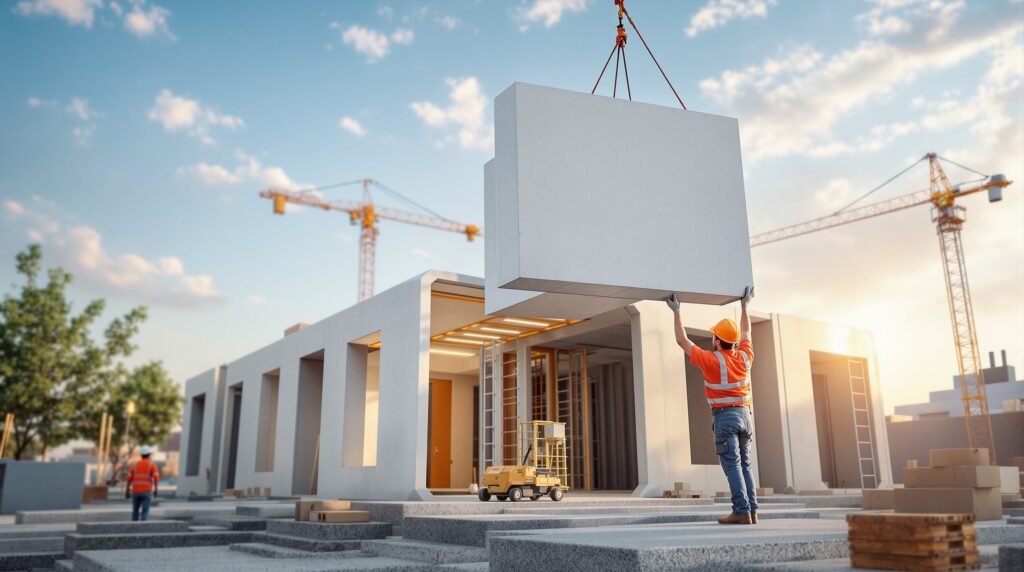
In the pursuit of innovation in concrete technology, the concept of “lightweight and flexible concrete” is redefining the possibilities of this age-old building material. In the section titled “Lightweight and Flexible Concrete,” we delve into the fascinating world of concrete that defies convention. This segment of the blog explores how concrete, traditionally known for its strength and rigidity, is being transformed into a lightweight and flexible medium. From construction in challenging environments to innovative architectural designs that require unconventional shapes, this section unveils the groundbreaking techniques and materials that are making it all possible. Whether you’re an architect seeking greater design freedom or a builder tackling unique challenges, this exploration of lightweight and flexible concrete showcases how this versatile material is transcending its traditional boundaries, shaping the future of construction.
The rise of lightweight concrete for easier handling and installation.
The rise of lightweight concrete is revolutionizing the construction industry, making handling and installation significantly more manageable. Traditional concrete, known for its density and weight, can pose logistical challenges during transportation and placement. Lightweight concrete, on the other hand, incorporates lightweight aggregates such as expanded clay, shale, or perlite, reducing its density while retaining its structural integrity. This transformation not only eases the burden of transporting heavy loads but also simplifies the installation process, especially in projects with intricate designs or locations that are challenging to access. The versatility of lightweight concrete extends to a wide range of applications, from roofing systems to architectural elements, where its reduced weight proves to be a game-changer, allowing for greater flexibility and creativity in construction projects. As this trend gains momentum, lightweight concrete is not only enhancing efficiency but also opening up new avenues for innovative design and construction practices.
Developments in flexible concrete and its impact on design flexibility.
Developments in flexible concrete are ushering in a new era of design flexibility in the construction industry. This innovative concrete variant is engineered to be highly malleable and adaptable, allowing it to conform to complex shapes and contours. Architects and designers are embracing flexible concrete for its ability to create curved, flowing, and non-linear structures that were once challenging to achieve with traditional rigid concrete. This newfound freedom in design opens up opportunities for creating visually striking and artistic structures that push the boundaries of architectural imagination. Flexible concrete is not only enhancing the aesthetics of modern buildings but also contributing to their structural resilience by allowing for designs that can better withstand dynamic forces such as earthquakes and strong winds. This development is empowering architects and builders to explore uncharted territory in architectural design, leading to more innovative and iconic structures that redefine the landscape of modern construction.
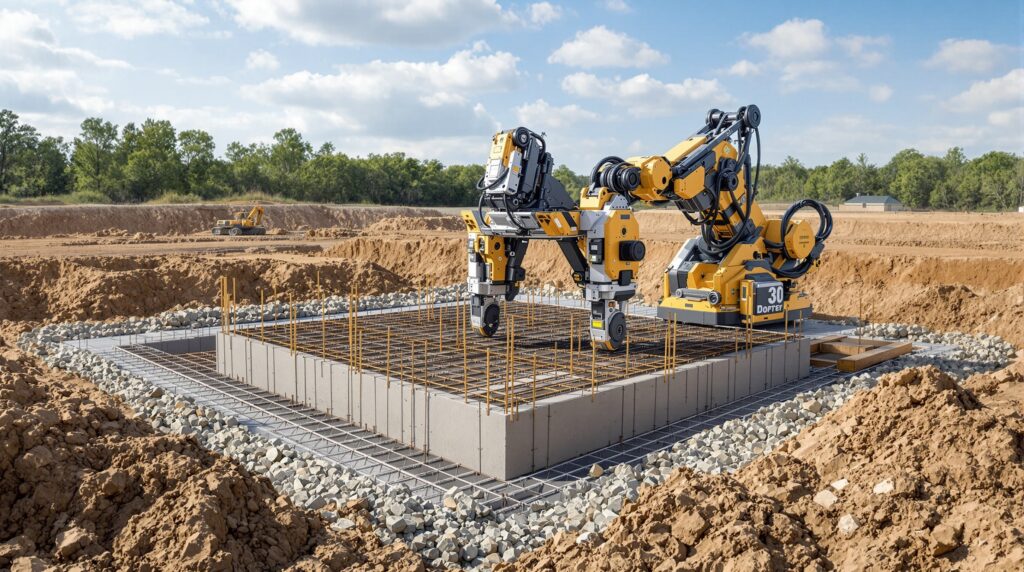
3D Printing with Concrete
The advent of 3D printing technology has transcended traditional boundaries in the construction industry, and in the section titled “3D Printing with Concrete,” we dive into the fascinating world of additive manufacturing with this versatile material. This segment of the blog explores how 3D printing is revolutionizing concrete construction, allowing for the creation of intricate and precise structures that were once deemed impossible or cost-prohibitive. From architectural marvels to on-site construction automation, this section unveils the cutting-edge techniques and applications of 3D printing with concrete. Whether you’re an architect looking to push the boundaries of design or a builder seeking efficient and sustainable construction methods, this exploration of 3D printing in concrete showcases the transformative power of technology in shaping the future of construction.
The impact of 3D printing technology on concrete construction.
The impact of 3D printing technology on concrete construction is nothing short of revolutionary. This innovative approach allows for the precise layer-by-layer deposition of concrete, enabling the creation of complex and intricate structures with unparalleled speed and precision. 3D printing offers architects and designers unprecedented freedom to explore unconventional shapes and geometries, pushing the boundaries of what can be achieved with traditional concrete casting methods. Moreover, this technology is incredibly efficient, significantly reducing material waste and labor costs, while also speeding up construction timelines. It has the potential to address housing shortages, disaster relief, and sustainable construction, making it a game-changer in the industry. As 3D printing continues to advance, its impact on concrete construction promises to reshape the way we build and usher in a new era of architectural innovation and efficiency.
Case studies of 3D printed concrete structures and their benefits.
Case studies of 3D printed concrete structures showcase the tangible benefits of this transformative technology. From the construction of intricately designed pavilions and bridges to the development of affordable housing solutions, these real-world applications highlight the advantages of 3D printing in concrete. Benefits include reduced construction time, minimal material waste, and cost-effectiveness, making it an attractive option for large-scale projects. Moreover, 3D printing allows for the integration of smart technologies and sustainable practices, enhancing the functionality and eco-friendliness of these structures. Case studies demonstrate that 3D printed concrete not only addresses the challenges of traditional construction but also paves the way for innovative and sustainable building practices, offering a glimpse into the future of construction possibilities.
Smart Concrete and IoT Integration
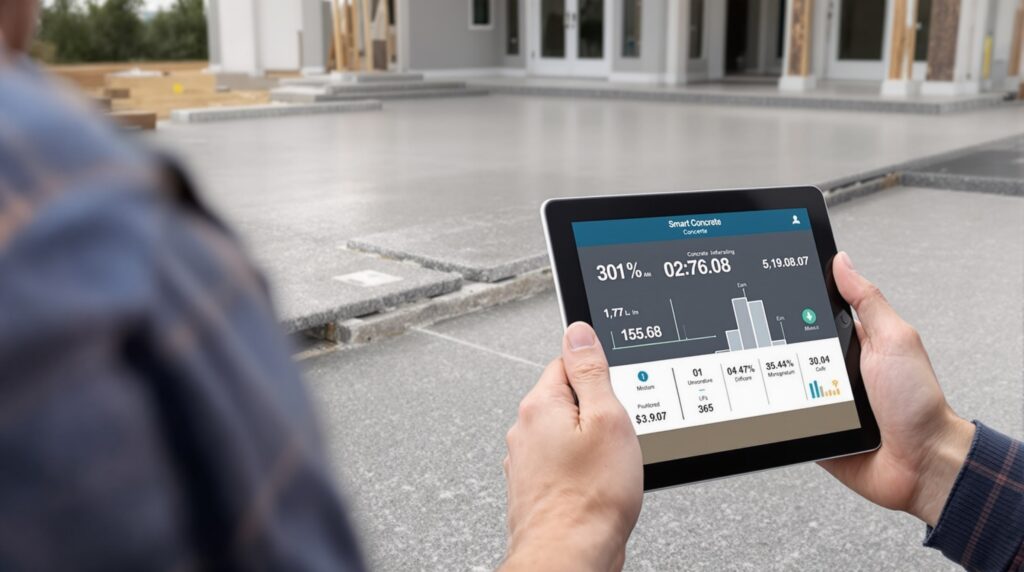
In the age of smart technology, concrete is getting an IQ boost with the integration of the Internet of Things (IoT). In the section titled “Smart Concrete and IoT Integration,” we embark on a journey through the fascinating realm where concrete becomes intelligent. This segment of the blog explores how IoT technology is converging with concrete to create a new generation of “smart concrete.” From sensors embedded within concrete structures to real-time data analytics, this section unveils the cutting-edge innovations that are transforming how we monitor, manage, and optimize concrete infrastructure. Whether you’re a civil engineer seeking to enhance the resilience of critical infrastructure or a technophile intrigued by the marriage of concrete and IoT, this exploration of smart concrete and IoT integration reveals the immense potential for enhancing the performance, safety, and sustainability of concrete structures in the modern world.
Introduction to smart concrete and its ability to sense structural changes.
Smart concrete, with its remarkable ability to sense structural changes, represents a groundbreaking advancement in the construction industry. This innovative material is embedded with sensors that can detect a wide range of factors affecting the structural integrity of concrete, including cracks, temperature fluctuations, and moisture levels. These sensors continuously monitor the concrete’s condition and transmit real-time data to a central system. As structural changes occur, smart concrete provides early warnings, enabling proactive maintenance and repairs. This not only enhances the safety and durability of concrete structures but also reduces the risk of catastrophic failures. The integration of smart concrete into infrastructure projects offers a transformative approach to structural health monitoring, ushering in an era where concrete structures can actively communicate their well-being, ultimately leading to safer and more resilient construction.
The integration of IoT devices in concrete for monitoring and maintenance.
The integration of IoT devices in concrete marks a paradigm shift in the way we monitor and maintain concrete structures. These devices, equipped with sensors and communication capabilities, are strategically embedded within concrete elements. They continuously collect data on factors like temperature, humidity, stress, and even structural movement. This real-time data is transmitted to a centralized system that analyzes and interprets it. Engineers and maintenance teams can access this valuable information remotely, enabling them to monitor the condition of concrete structures and identify potential issues long before they become critical. The result is proactive maintenance, cost savings, and enhanced safety. IoT integration ensures that concrete structures can communicate their needs, empowering us to make informed decisions that extend their lifespan and improve overall infrastructure resilience.
Conclusion:
In summary, the top trends in concrete work are reshaping the landscape of modern construction. From lightweight and flexible concrete that offers newfound design possibilities to 3D printing technology that revolutionizes the construction process, and from the durability enhancements that ensure the longevity of structures to the integration of IoT devices for real-time monitoring and maintenance, these innovations hold immense significance. They not only enhance efficiency and sustainability but also push the boundaries of architectural design and structural resilience. Looking ahead, these trends are set to become pivotal in shaping the construction industry’s future. As technology continues to advance, the potential for further innovation is boundless, promising an era where construction is not only efficient but also environmentally conscious, innovative, and safe. The future of construction is undeniably exciting, driven by the evolution of concrete and its integration with cutting-edge technologies.
Schedule A Free consultation
Fill out your details below and we will reach out to you for a free consultation!
Monday 9 AM – 5 PM
Tuesday 9 AM – 5 PM
Wednesday 9 AM – 5 PM
Thursday 9 AM – 5 PM
Friday 9 AM – 5 PM
Saturday: By Appointment Only
Sunday: Closed
